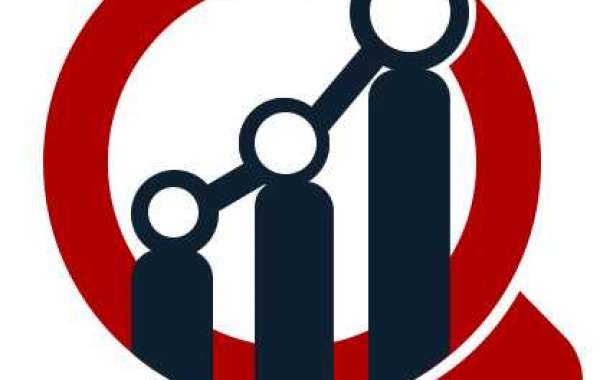Market Highlights
Global Automotive Airbag Fabric Market size is anticipated to register a significant CAGR of 5% between 2020 and 2027. Airbags are used to protect the passengers on-board in case of accidents and auto-collision. The fabric used for making airbags is flexible and possess high tensile strength and heat resistance with low air permeability and better energy absorption. Most common airbag fabrics used are nylon 6.6, nylon 6 and nylon 4.6.
Air bags and airbag fabric materials have evolved significantly over the many years since their introduction to vehicles. The general characteristics of airbag fabrics are high strength, energy absorption, temperature stability, and coating adhesion. The airbag is made up from highly dense and plain-woven fabric. Airbags play a vital role in protecting drivers and passengers of any automobile during an accident or sudden impact. Airbags are a part of the primary safety mechanism incorporated in most automobiles. Airbags inflate during a sudden impact and help avoid any direct injury to the passengers. Airbags are made from highly advanced materials, which can withstand the sudden inflation of a gas without rupturing during the process. Airbags are made of several materials which are impermeable to gas; however, Nylon 6,6 is the preferred choice of fabric for airbags. Airbags are also made of aramid fabric; however, the cost of aramid is substantially high and hence, it is reserved for niche applications. The fabric used for airbags needs to exhibit two critical properties: high tensile strength and very low gas permeability. Moreover, it also needs to possess elasticity, lightweight or low specific density, and fatigue resistance.
Global Automotive Airbag Fabric Market, 2020–2027
In 2019, Asia-Pacific Contributed Significantly to the Automotive Airbag Fabric Market in Terms of Share: MRFR
Based on Region, the global Automotive Airbag Fabric market has been segmented into North America, Europe, Asia-Pacific, and the rest of the world. Asia-Pacific has been the largest market for airbag fabrics, primarily propelled by China, Japan, South Korea, and India. China and India are the growth engines of the Asia-Pacific market due to a continuous increase in the demand for vehicles and the introduction of stringent safety standards. North America and Europe are also the major markets and are anticipated to generate considerable demand for airbag fabrics in the coming five years. The US and Mexico are the major markets in North America, whereas Germany, France, the UK, and Russia are the major markets in Europe. The fitment rate of airbags in Europe is higher than in North America and Asia-Pacific.
Global Automotive Airbag Fabric market has been Segmented By Yarn Type, Coating Type, Vehicle Type, Airbag Type, and Region. Based on Yarn Type, the global Automotive Airbag Fabric market can be bifurcated into Polyamide and Polyester. The Polyamide segment is anticipated to grow at a significant CAGR in the coming years. By Coating Type, the Automotive Airbag Fabric market has been split into Neoprene Coated, Silicone Coated, and Uncoated. The Neoprene Coated segment held a sizeable share and is anticipated to grow at a significant CAGR in the coming years. By vehicle type, the Automotive Airbag Fabric market has been split into Passenger Cars, Light Commercial Vehicles, Heavy Trucks, and Buses & Coaches. The passenger cars segment held a sizeable share and is anticipated to grow at a significant CAGR in the coming years. By Airbag Type, the Automotive Airbag Fabric market can be bifurcated into Front Airbag, Side Airbag, Knee Airbag, Curtain Airbag, and Other Airbags. The Front Airbag segment is anticipated to grow at a significant CAGR in the coming years.
Drivers
Scope of the Report
This report provides an in-depth analysis of the global Automotive Airbag Fabric market, tracking four market segments across four geographic regions. The report studies key players, providing a six-year annual trend analysis that highlights the market size and shares for North America, Europe, Asia-Pacific, and the rest of the world. The report also presents a forecast, focusing on the market opportunities for the next six years for each region. The scope of the study segments the Global Automotive Airbag Fabric Market by Yarn Type, Coating Type, Vehicle Type, Airbag Type, and region.
Access Report Details @ https://www.marketresearchfuture.com/reports/automotive-airbag-fabric-market-10428
- Yarn Type
- Polyamide
- Polyester
- Coating Type
- Neoprene Coated
- Silicone Coated
- Uncoated
- Vehicle Type
- Passenger Cars
- Light Commercial Vehicles
- Heavy Trucks
- Buses & Coaches
- Airbag Type
- Front Airbag
- Side Airbag
- Knee Airbag
- Curtain Airbag
- Other Airbags
- By Region
- North America
- Asia-Pacific
- Europe
- Rest of the World
Key Players
Key Players in the Global Automotive Airbag Fabric Market are Global Safety Textiles (Hyosung), HMT (Xiamen) New Technical Materials Co., Ltd., Asahi Kasei Co., Ltd., Autoliv AB, Kolon Industries, Takata Corporation, Teijin Limited, Toray Industries, Toyobo Co., Ltd., and Toyota Boshoku Corporation.








